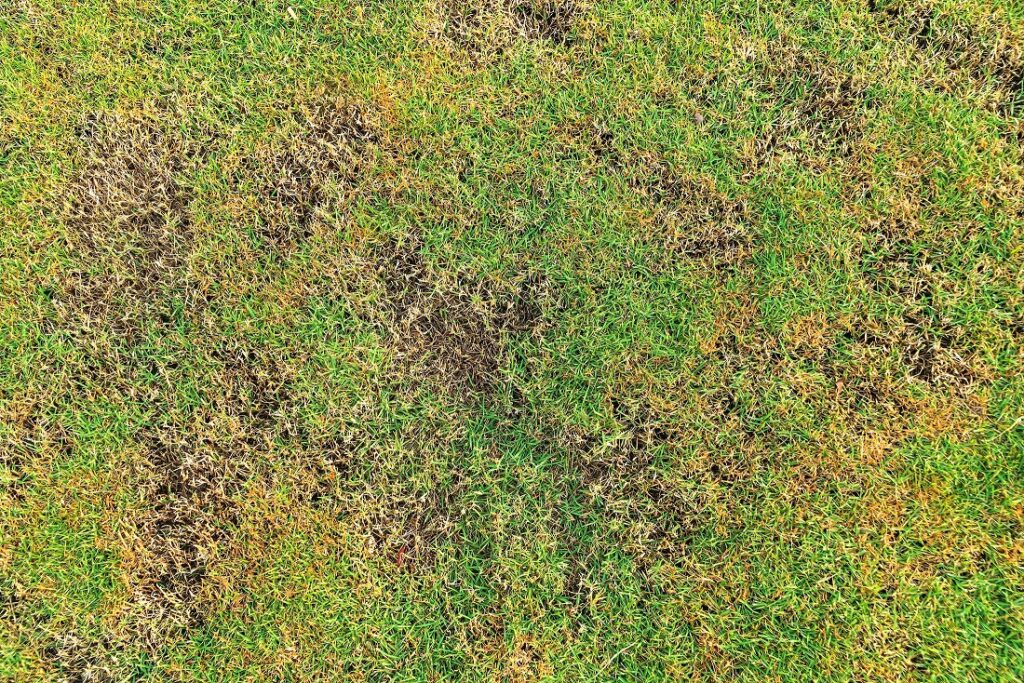
Preventing Brown Patch Fungus From Invading Your Landscaping
When there is a problem affecting the lawn on your commercial property, it is important to determine the cause. For example, when patches of yellow or brown grass start forming, you may assume that watering more often will help. However, the real culprit may be brown patch fungus invading your soil. If so, more watering is likely to make the problem worse rather than better. Here is what you need to know to protect your commercial property from this damaging fungal infestation.
What Does Brown Patch Fungus Do?
The scientific name for this invasive fungus is Rhizoctonia. It lives in the soil, where it attacks the roots of the grass. Damage to the grass roots gradually causes the leaves to rot. When this occurs, the grass slowly changes color: the first yellow, then light orange, and finally brown. The damage causes patches of discolored grass on your lawn that often appear in distinctive oblong or circular shapes. Hence the colloquial name of brown patch fungus.
When Does the Infection Develop?
Like other fungi, brown patch fungus requires two things to grow and thrive: Food and water. The grass roots provide the food, and infection is most likely to occur under hot, humid conditions that leave the lawn damp for at least 48 hours at a time. The spores may be dormant in the soil, but the favorable conditions can reactivate them.
It takes a while for the signs of damage from the fungus to become obvious. Therefore, rainy conditions in the summer may give rise to its growth, but it may be fall before you see any signs of it.
How Do You Prevent Brown Patch Fungus?
There are three different aspects of brown patch fungus prevention and keeping it from:
- Developing in the first place
- Spreading around the lawn
- Coming back to the lawn
If you are successful in preventing the fungus from growing in the first place, you shouldn’t have to worry about the other two steps. However, it takes vigilance and careful planning to prevent brown patch fungus. It requires monitoring moisture levels in the soil and refraining from watering the lawn until it dries out sufficiently.
If you do have a fungal infection in one area of your lawn, you want to prevent it from spreading to other areas. While the infection is active, you should avoid fertilizing your lawn because you will feed the fungus in the process. Spores may attach themselves to shoes or grass clippings, so you should prevent anyone from walking over the affected areas and avoid mowing them as well.
Unfortunately, once you have had brown patch fungus on your lawn, you are more likely to see recurrent infections. An application of fungicide can treat the current infection and help prevent subsequent ones. You may have to have these performed several times per year as the conditions for fungal growth become more favorable.
Why Is Prevention Important?
For better or worse, the outer appearance of your business affects how your customers perceive it. If you have areas of your commercial lawn affected by brown patch fungus, it may appear to customers that you do not care about proper lawn maintenance. As a result, they may wonder if you are equally careless in other aspects of running your business.
With proper treatment, grass in areas affected by brown patch fungus usually regrows with time. However, this may not occur until the next active growing season, meaning that the damaged patches on your lawn may remain for several months, enough time to do damage to your reputation.
Due to the skillful maintenance and monitoring involved, you may need to hire an outside company to prevent brown patch fungus from developing on your property in the first place. Commercial landscape maintenance is only one of the services we offer to commercial properties at Grounds Control USA.
